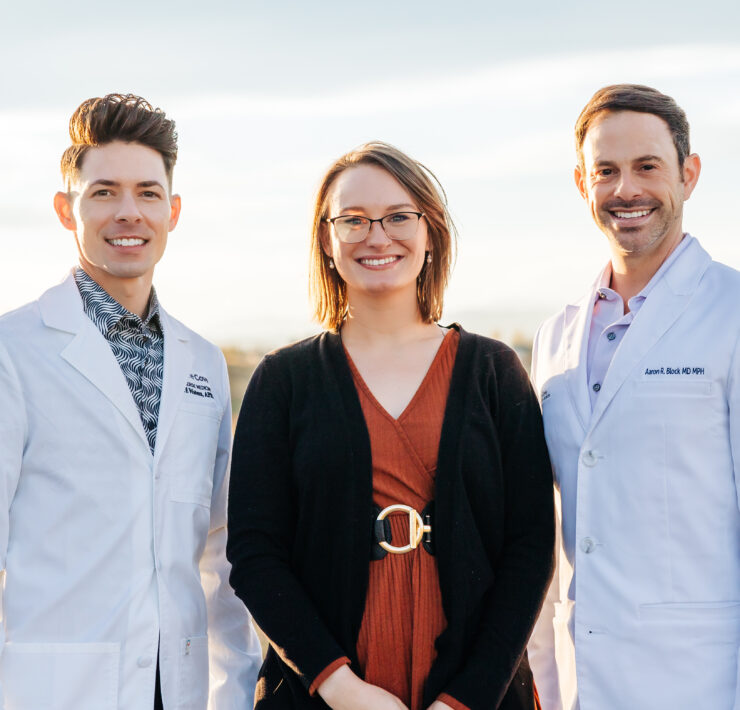All About Mushrooms: The Future of Psychedelic Therapy

Harley Rose is a Virginian transplant to Denver, Colorado. She…
As Coloradoans anticipate the rollout of psilocybin legalization in 2025 following the passage of the Natural Health Medicine Act, researchers from the Naropa Center for Psychedelic Studies explain what people can expect from Colorado on both the clinical and legal fronts.
Dr. Diana Quinn, Director of Clinical Education, and Joe Harrison, Executive Director, discuss the future of healing centers in Colorado and describe the outlook of future psychedelic research as it pertains to the treatment of mental health conditions.
What is ‘natural medicine’?
Dr. Quinn: The Natural Medicine Health Act is designed to encompass a number of different plant medicines, as well as fungi and cacti that would all be hallucinogenic or induce non-ordinary states of consciousness. The initial piece of the legislation of the NMHA is focused on psilocybin specifically, wherein—and this is our area of focus—psilocybin services can be offered and received within certain kinds of defined or prescribed context.
Also, the NMHA decriminalizes broadly plant medicines across the board. There may in future be the possibility of inclusion of additional forms of plant medicine within similar contexts as what psilocybin is being used right now. But at present, really the framework is around psilocybin facilitation, so that individuals who wish to have an experience with psilocybin would seek and establish care with a facilitator.
What would facilitation look like?
Dr. Quinn: “There are two tiers of facilitation. One tier is the clinical facilitation tier, which would be applicable to someone who already holds a license with [the Department of Regulatory Affairs (DORA)] to provide any type of clinical care, whether it’s psychotherapy or medical care.
They would be allowed to practice within their scope under their pre-existing secondary license with DORA, as well as do psilocybin facilitation and see clients who are coming for a range of reasons, specifically for therapeutic purposes, whereas the other general facilitation tier is available for adults who wish to become licensed as psilocybin facilitators who do not already carry a secondary license with DORA.
So, it’s meant to be a general adult use program so that individuals who are seeking psilocybin services don’t need to see somebody specifically with a medical or therapeutic background. They can just see someone who wishes to be trained and do facilitation that doesn’t strictly have to have that background. It’s a novel profession, essentially, or trade.
Joe Harrison: I just want to clarify, even though the regulations are being built, they’re not completely finished, and that access to psilocybin won’t be offered until 2025, when Colorado is going to allow these licensed businesses, which they’re calling healing centers, to begin delivering that service line. So, it’s still kind of in this period of unfolding. The Department of Regulatory Affairs has finalized its draft rules. We’re waiting on others. And it’s not totally clear exactly how all of the pieces are going to be put together. But the hope is that we will begin being able to offer psilocybin therapeutically in 2025 in the state of Colorado.
What do these regulations look like as they’re unfolding?
Harrison: The NMHA also makes a provision for training centers or training programs. One of the things that Naropa is heavily involved in is training individuals to be psychedelic practitioners or practitioners within the space. These are the individuals who will be working within the healing centers themselves.
In addition to rules around training programs and healing centers, there are also rules around cultivators of psilocybin. That’s how the product actually is grown and gets to these healing centers.There are these different pieces that all have to be put together.
I think a lot of folks are looking to Colorado to see how it’s going to roll out, so it’s important that we get this right because they’ll be looking at what we did well and what didn’t go so well.
What differences exist between rollouts in Colorado versus Oregon?
Dr. Quinn: A different body has overseen the training and licensing of facilitators, which are the rules that currently have been published and signed. So one of the key differences that is already in place between Colorado and Oregon is, as I was mentioning, the different tiers of facilitation.
In Oregon, there’s only one tier and one type of facilitation. Therefore,someone who has a clinical license to practice may not use their scope of practice while they’re doing psilocybin facilitation. That has been one area of complaint and critique that has come up among some of the facilitators in Oregon. Another concern that has been broadly expressed in Oregon that we’re waiting to see play out in Colorado are the rules and regulations governing the healing centers themselves and what the fees will be.
What can you tell us about accessibility as it pertains to facilitation of these treatments?
Dr. Quinn: Accessibility isn’t just about the cost. It’s also ensuring that the practitioners are diverse and able to service a number of communities. This year alone, we have given out about $240,000 in training scholarships to trainees within Naropa Center for Psychedelic Studies. About a third of those trainees are people of the global majority. Thirty percent identify as Two-Spirit LGBTQ. I think that it’s what makes our program successful.
I identify as a queer person of color myself. The majority of our teaching team are queer, trans, and Black and brown clinicians and practitioners in both of our programs: our Certificate of Psychedelic Assisted Therapy, as well as the psilocybin facilitator training.
So representation in the training, in the teaching team, and affinity spaces, as well as opportunities for not only creating more inclusivity for folks who often don’t experience a high level of welcome or inclusion in a lot of teaching environments or conventional spaces, and particularly, the psychedelic space, is not across the board inclusive all the time.
How much does treatment cost?
Harrison: “The average cost (in Oregon) is $2,500. There are ways that we can reduce those costs mechanically and there are other ways like through creating access funds, that we can support people who might not otherwise be able to afford it.
What are some misconceptions when it comes to this kind of treatment?
Dr. Quinn: One misconception is that psychedelic therapy could be sort of a cure-all or a panacea of just good benefit for everyone and everyone should try it. That’s definitely not the case.
Certainly, the research is promising. There are hundreds, if not thousands of years of empirical evidence for these medicines having context in indigenous lineages. Those contexts are very different from the kind of frameworks that we’re talking about here in a healing center or in a clinical or medical context.
So, I think that there are some ways in which putting these ancient wisdom traditions and these medicines into these contexts—which are very human and therefore very flawed—could actually not always be of benefit to all. Not to mention the impact to those indigenous lineage carriers and the sometimes extractive way of thinking that can come with the capitalist systems that we’re operating inside of.
Sometimes people have a very rosy concept of what the psychedelic field is. For any number of reasons, psychedelic medicine may not be suitable for everyone and doing facilitation work is not a really glamorous thing.
It’s actually really difficult to maintain a high level of presence and compassion and feel very secure in a situation that can be rather volatile and unpredictable. These are non-specific amplifiers. The medicines can really generate a lot and for some people they can get worse before they get better.
For facilitators who maybe don’t have their own very solid foundation or a community of practice, it can be disconcerting. Sometimes people who are drawn to go into the work might not really understand the gravity of what they’re holding as a responsibility. So those are just a few things that come to mind.
Harrison: I would add that the same excitement and energy that drives enrollment in our programs also is part of this larger bubble of excitement around psychedelics. I’ve heard leaders in the field say things like this could be critical to the survival of our species. This overblows expectations, and we’re starting to see some of the repercussions of that kind of thinking.
These expectations that psychedelics are going to solve all of our human problems—We’re going to have to reckon with that. With the reality that it’s not a panacea. With programs and legislation coming online in Colorado and in Oregon, we’re going to see what the actual healing implications are for psychedelics as they go out into the real world.
It’ll also be really interesting to see if MDMA is approved by the Food and Drug Administration. If psilocybin is approved federally, as these medicines roll out, as these therapies roll out, we’ll collect more real world data.
Can you speak to the effectiveness of this treatment?
Harrison: “Psychedelics—psilocybin specifically—have been shown to be effective, or rather there’s data to support its effectiveness in a number of indications, including depression. There have been studies done with psilocybin, where, at least in the initial studies, they saw something like an 80% quit rate (for smoking), which is double what you would see with standard care.
So, I think that if we can roll it out right, and if we can make this accessible, it will help address a crushing mental health crisis in the U.S. I’m not saying it’s going to solve it. We do have to get it right, right? We have to make sure that it’s accessible to the people who need it. But I think that there’s a lot of potential in this field to do really good work and to provide a lot of healing.
Dr. Quinn: What came to mind was the clinical research that showed psilocybin plus therapy to be more than twice as effective as any existing combination drug plus therapy that’s available now, and something like four times more effective than therapy alone.
What's Your Reaction?
Harley Rose is a Virginian transplant to Denver, Colorado. She is a writer at Out Front Magazine. Her other creative work is as an artist, model, and musician.










